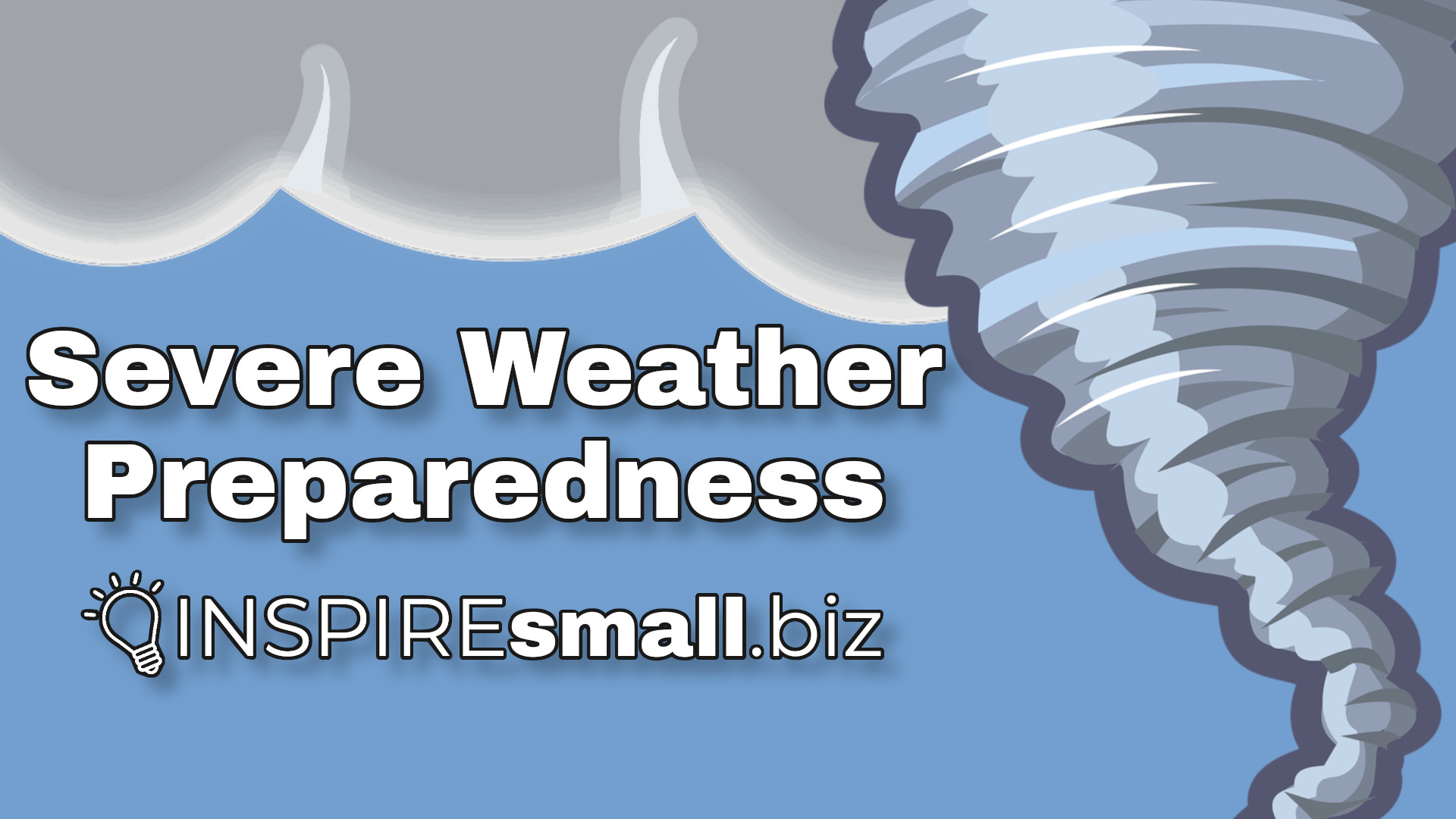Indiana Severe Weather Preparedness Week is March 13-19
Each year, the National Weather Service, Indiana State Police, Indiana Department of Homeland Security, Indiana Department of Education, Indiana Broadcasters Association, American Red Cross and Amateur Radio Operators team-up to make sure everyone in our state is ready for spring severe weather threats.
A Statewide Tornado Drill will be conducted on Tuesday, March 15th
To ensure all of the warning systems in place are working correctly, a statewide Tornado Drill will be broadcast Tuesday, March 15th at 10:15 AM EDT/9:15 AM CDT. Television, radio stations and NOAA weather radios will broadcast a Tornado Warning message. This message will be a test. If severe weather is possible on Tuesday, the test will be rescheduled for Wednesday, March 16th. Read the full press release from the National Weather Service here.
Tips to Be Severe Weather Ready at Home & Work
Get An NOAA Weather Radio
Always keep a battery-operated weather radio in your Emergency Preparedness Kit. Weather radio sets can tune into your local NOAA All Hazards Radio station for updates on when it’s safe to leave your shelter after a storm. Some models of weather radios also have a flashlight, charger and hand-cranked power generator built-in.
Other important items to have in your Emergency Preparedness Kit include a 7-day supply of any medications you take, a flashlight with extra batteries, a 3-day supply of food and water, and a first aid kit.
Check the Weather Forecast
While severe weather can happen with little or no warning, the National Weather Service’s Storm Prediction Center publishes forecasts on the possibility of severe weather throughout the country. The risk categories range from Thunderstorms, where no severe weather is expected to High, where widespread severe weather is expected.

- 0 – Thunderstorms: no severe weather is expected. Lightning & flooding threats exist with all thunderstorms.
- 1 – Marginal: Isolated severe storms possible. Limited in duration and/or coverage and/or intensity.
- 2 – Slight: Scattered severe storms possible. Short-lived and/or not widespread, isolated intense storms possible.
- 3 – Enhanced: Numerous severe storms possible. More persistent and/or widespread, a few intense.
- 4 – Moderate: Widespread severe storms likely. Long, widespread and intense.
- 5 – High: Widespread severe storms expected. Long-lived, very widespread and particularly intense.
Severe Weather Terms and Definitions

- Watch: There is a risk for severe weather. Check the forecast for additional alerts regularly.
- Severe Thunderstorm: A thunderstorm is considered severe when winds reach 58 miles per hour or higher, hail larger than a 1″ diameter or if it is capable of producing a tornado
- Warning: A severe weather event has been identified and poses an immediate risk
Thunderstorm Safety
Thunderstorms develop quickly and pose a threat to outdoor activities. When a thunderstorm approaches, move into a substantial building until the storm passes.
Flooding Safety

Flooding is a serious hazard that occurs when large amounts of rain or melting snow overwhelm waterways and sewer systems resulting in flooded areas. If you encounter a flooded road while driving, do not attempt to cross. Rapid flowing water can destroy roads and may be deeper that it appears. If flooding is a threat in your area, move to higher ground.
Tornado Safety
Tornadoes are most common between April and June but can happen ay time of year. Each year, Indiana has an average of 25 tornadoes. in 2011, Indiana had a record 72 tornadoes.
While most of the tornadoes in Indiana are small and cause minor damage, there are several major tornadoes in the state’s history. Some examples of notable tornadoes in Indiana include the Tri-State Tornado in 1925, a violent tornado in Elkhart, Indiana during the Tornado Outbreak of March 1942, the Kokomo tornado during the Palm Sunday Tornado Outbreak of 1965, the DePauw tornado during the 1974 Super Outbreak and the Henryville Tornado in 2012.
When a Tornado Warning has been issued for your area, take cover immediately. If you have a basement, go there. If there isn’t a basement, go to an interior room, stairway or hallway. If you’re outdoors, seek a sturdy indoor shelter. If finding shelter isn’t an option, lie flat in a ditch and protect your head.
Know Your Emergency Shelter & Evacuation Plan
Severe weather events can happen at any time of the day with little or no warning. Knowing your shelter and evacuation plan saves time when it really matters. Make a plan at home and make sure your family knows what to do for any severe weather event, and how to contact each other if severe weather happens while you’re in different places.
At work, your shelter and evacuation plan should frequently discussed with your entire team. Clearly mark the area of your business designated as the shelter and keep it free of clutter to maximize space.
Protect Your Business Data
In addition to your shelter & evacuation plans, your business should have a disaster plan for how to preserve critical business data.
If your business works with a managed IT provider, you probably already have this in place. Frequently backing up your business data to an off-site place such as a cloud-based solution helps your business avoid losing data from any disaster, not just weather related.
Become A SKYWARN Storm Spotter
The SKYWARN volunteer program is nearly 400,000 trained weather spotters who report weather conditions in their community to the National Weather Service. These reports help the National Weather Service track storms and issue warnings faster, giving people more time to prepare.
Training for the SKYWARN Storm Spotter Program is free. The National Weather Service encourages anyone interested in public service to join. Training usually takes about 2 hours. You can learn more about upcoming training dates in your area here. You can also enroll in the course online here.
Sources & Additional Reading
- National Weather Service 2022 Severe Weather Preparedness Week Schedule: https://www.weather.gov/ind/SevereWxWeek
- National Weather Service Severe Weather Preparedness Week: https://www.weather.gov/media/ind/PrepWeeks/Severe/2022_severenewsletter.pdf
- NOAA All Hazards Radio Station in Indiana: https://www.weather.gov/nwr/stations?State=IN
- FEMA Disaster Preparedness: https://www.ready.gov
- National Weather Service SKYWARN Storm Spotter Program: https://www.weather.gov/SKYWARN
- National Weather Service Event Codes: https://www.weather.gov/nwr/eventcodes



